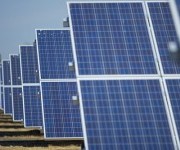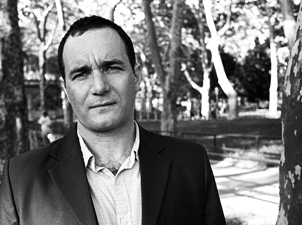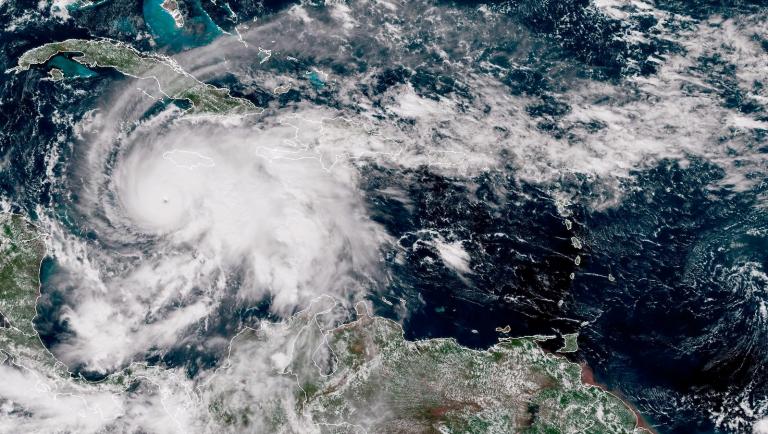Christian ParentiA Kenyan pastoralist killed in a cattle raid; an Afghan farmer trusting the Taliban to protect his poppy crop; more crackdowns along the U.S.-Mexico border; the Arab Spring — are these isolated incidents of region-specific violence and turmoil? Or can they all claim a common root cause: climate change?
Journalist Christian Parenti, author of the new book Tropic of Chaos: Climate Change and the New Geography of Violence, makes the case that climate change has contributed to all of these upheavals. Parenti lays out how climate change works as a catalyst for unrest in what he defines as the “Tropic of Chaos,” the band encircling the middle of the globe between the Tropic of Cancer and the Tropic of Capricorn, where already-destabilized nations are particularly vulnerable to the devastating effects of increasingly extreme weather patterns.
I sat down with Parenti to get the lowdown on the chaos and what needs to happen to stave off the worst-case scenarios.
Q. Your book contains a ton of on-the-ground reports from all over the developing world. Did you set out to these places with a thesis in mind? How did you form the idea behind Tropic of Chaos?
A. I was originally under contract to write a book about Afghanistan. But Afghanistan felt understood to me. There are books out there if you want to read them. This question of how climate change is going to, and already does, create violence — there wasn’t a book that really made that argument. Climate change works through other preexisting problems, particularly the legacy of the Cold War, and the legacy of neoliberal economic restructuring. These two forces in combination have, [in] much of the Global South, set the stage for crisis. And now comes anthropogenic climate change, wreaking a unique and special and intense kind of havoc by turning up the intensity of these preexisting conflicts.
Q. What is the legacy of those two forces?
A. The Cold War created a glut of weapons in the Global South. It created infrastructures of smuggling and assassination; all kinds of strategies and tactics of asymmetrical warfare are left behind. In countries that were on the front lines of the proxy conflicts of the Cold War, the landscape is littered with bands of armed men whose business is running guns one way and drugs the other way, or blood diamonds one way and drugs the other way.
And then the legacy of economic restructuring and neoliberalism, through the structural adjustment programs of the IMF and the World Bank, has increased inequality, increased poverty. There’s this particular injury that comes with inequality that sociologists refer to as relative deprivation. It’s pretty clear that poverty doesn’t in and of itself cause instability and violence. But the experience of deprivation in relation to what was, what should be, what others have, what would be just — that is definitely associated with rebellion.
Q. So how does climate change play into that?
A. Afghanistan’s a good example, where the drought is pushing people into poppy production. In Afghanistan, one side of the war attacks poppy: NATO, the U.S., the Afghan government. The other side of the war protects poppy: the Taliban. The farmers who grow poppy would say to me, well, one reason we do this and take these risks is because poppy is so drought resistant. It takes one-fifth the amount of water that wheat uses. And Afghanistan is suffering the worst drought in living memory, which has coincided with this whole NATO occupation. There’s this material interest in defending their right to grow the only crop that’s feasible under these drought conditions. And this drought fits the pattern of climate change. Scientists are clear about not saying any climatological or weather event is definitively caused by climate change, but there’s a pattern of the increased El Niño and La Niña cycles, and increased drought and flooding in a lot of areas. This pattern has been predicted for two decades and we see it kicking in.
Q. You don’t address the Arab Spring in your book. [Parenti finished writing it just before the protests began.] Are the uprisings in the Middle East also a result of the “catastrophic convergence” of political, economic, and environmental crises?
A. The Arab Spring, I’ve been arguing, is in part triggered by climate change. The question is why now, right? Egypt lived for 30 years under this kleptocratic police state. Why didn’t they rebel last year, or two years from now? One thing that happened was grain prices almost doubled last year: Corn prices went up by 91 percent, wheat prices went up by 83 percent. The corn prices were affected by flooding in Canada, the U.S., and Australia. The Black Sea drought — the worst drought that the former Soviet Union has seen in a hundred years — affected grain crops in the Ukraine, Russia, and Kazakhstan very badly. The largest wheat exporter in the world, Russia, declared a total ban on wheat exports. The largest wheat importer in the world is Egypt. Food inflation was running at 20 percent. The average Egyptian spends 40 percent of their income on food. These rebellions are always about much more. But, crucially, there was the price of bread, and that was linked to climate change. So I wouldn’t reduce the Arab Spring to climate change, but it’s about trying to tease out the causal role of climate change within all these crises.
Q. Your book focuses mainly on what’s going on in the Global South, the developing nations most affected by the collision of politics and climate change. Could we expect to see similar instability in the Global North?
A. No, I don’t think that kind of instability is on the horizon for the U.S. What is on the horizon for the U.S., in response to the gathering crisis of climate change, is increased xenophobia, increased surveillance, increased repression, a hardening of the state. This has been going on for 30 years in the U.S., and it’s not articulated as a response to climate change, but you can see that some of the pressures that it is articulated in response to, like immigration, are themselves caused by climate change. What are the real drivers behind immigration? Increasingly, climate change. We’re locked in for a three-foot sea rise by the end of the century. What does that mean for the movement of people?
Q. We know the science, we have the technology, and, as you explain in your book, corporate America has the capital to invest in clean energy. So why doesn’t the U.S. government get serious about climate policy?
A. There has been tremendous pushback from the fossil-fuel lobby. The Koch brothers have invested millions of dollars in messaging around casting doubt on the science, casting doubt on the efficacy of economic plans to transition away from fossil fuels. They have been very effective. A Pew poll found that 79 percent of people in 2006 thought climate change was a serious issue, and now it’s down to 63 percent. But that’s still a lot of people that take it seriously. Other policies
have been pushed through without that level of consensus.
Q. So what will force governments to make the changes we need?
A. People need to act collectively. It’s about direct action. People sitting on top of mountains and getting arrested and saying, “No, we’re not going to let you blow this mountain up.” We need to rebuild social movements.
In the face of this crisis, in this country, the state is either going to be a more repressive, environmentally triggered, climate crisis-oriented police state that develops, or it’s going to be a state that reengages with economic planning, economic retribution, a green New Deal, a mixed economy — basically Green Keynesianism. We have to recognize that American capitalism is a mixed economy and the government plays a central role, and we should build on what it does well and make sure it does that better.



